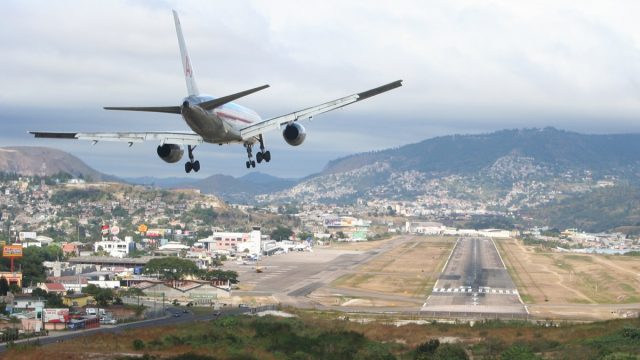13 Most Dangerous Airplane Runways in the World
Have you ever been on a flight that seemed like it was about to land, but at the last minute, it picked up altitude and make another circle? Your pilot might have been doing something called a “go-around,” a procedure performed frequently when approaching some of the world’s most dangerous airplane runways. Difficult landing conditions—like short tarmacs, hazardous terrain, and bad weather—demand experienced and confident pilots. Here, are the scariest airstrips to watch out for.
1
Princess Juliana Airport, Sint Maarten
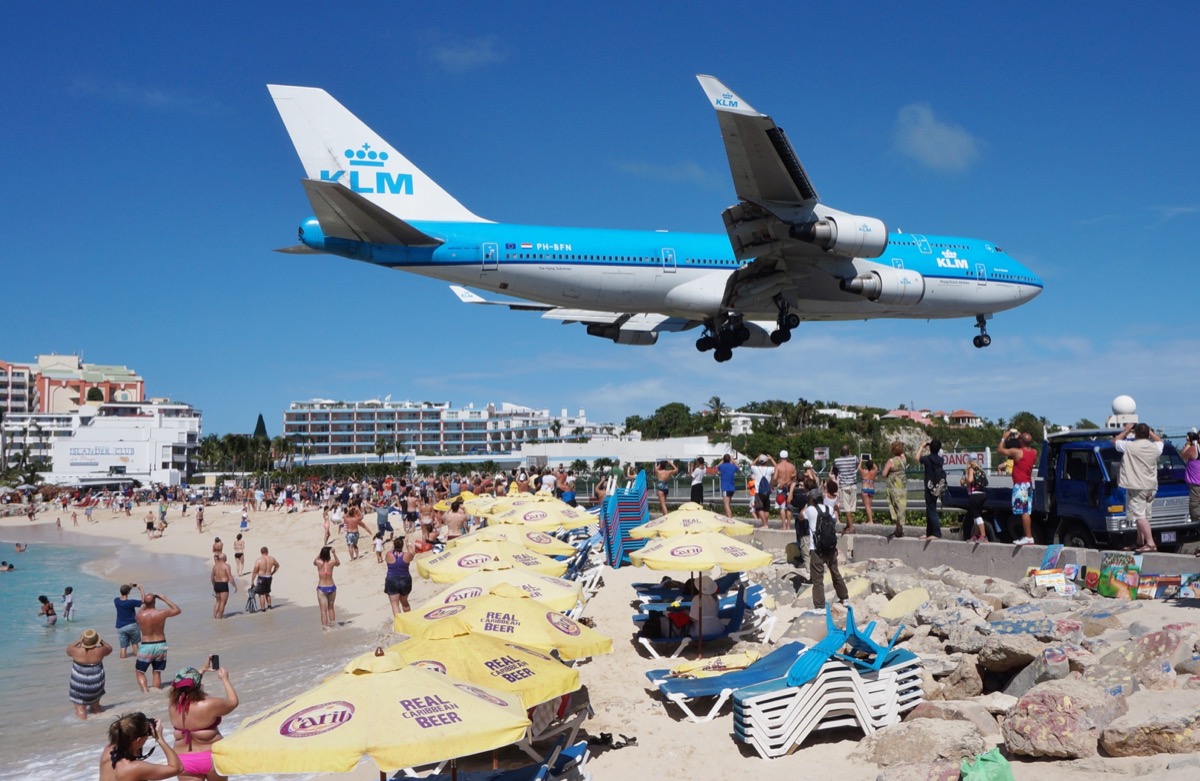
In Sint Maarten, a narrow beach and a fence separates the water from the short runway of the Princess Juliana Airport. All incoming planes must make a low altitude landing over Maho Beach, which has become a favorite gathering spot for visitors to take death-defying photos of planes overhead. So if you want to switch up the seaside scenery for a more thrilling adventure, this is the place for you.
2
Tenzing-Hillary Airport, Nepal
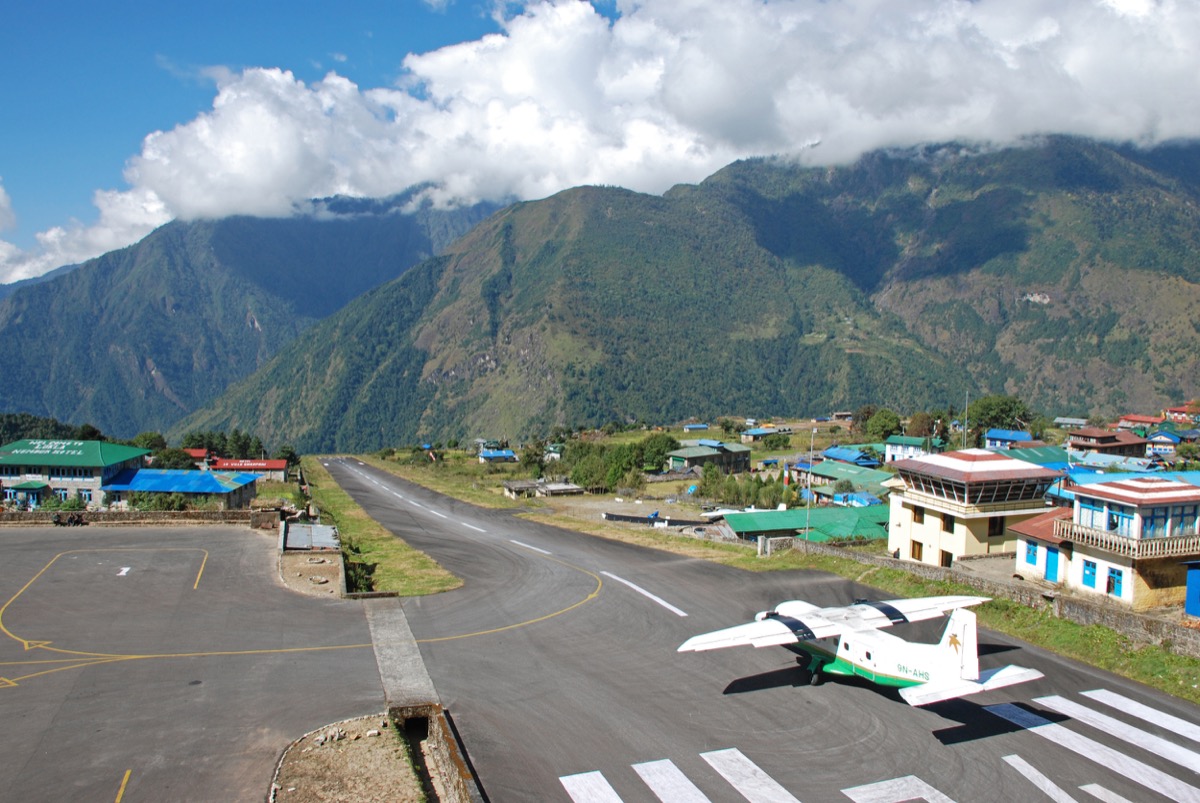
As the gateway to Mount Everest, it should come as no surprise that this airport is as dangerous as the record-holding mountain itself. The extremely short runway happens to be on an incline with a steep cliff at the end. Only small planes and helicopters are allowed to land here, and on approach, these aircrafts look more like toys when compared to the gargantuan scale of the surrounding Himalayas. Always erring on the side of caution, the airport closes frequently without warning due to changing wind conditions and cloud cover. However, passengers can find comfort in the fact that pilots are rigorously trained in short runway landings and take-offs.
3
Barra Airport, Scotland
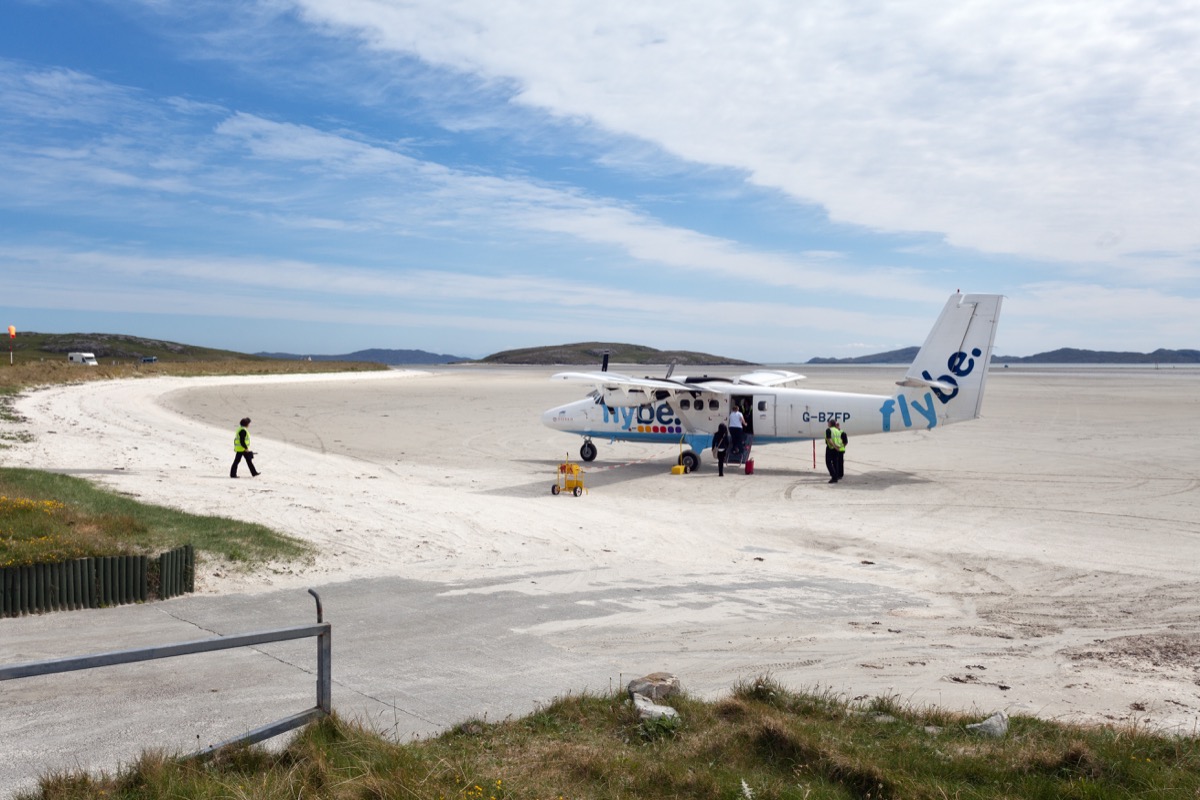
The runways (which are marked by wooden poles) at Scotland’s Barra Airport are located on the beach itself—so pilots can only land when the tide is out. The airport’s schedule completely depends on the ebbing water levels of Traigh Mhor Bay. When the high tide rolls in, all three runways are completely submerged in water. Located on a remote island in the Scottish Highlands, the airport serves one flight route from Glasgow, which arrives and departs twice per day.
4
Courchevel Altiport, France
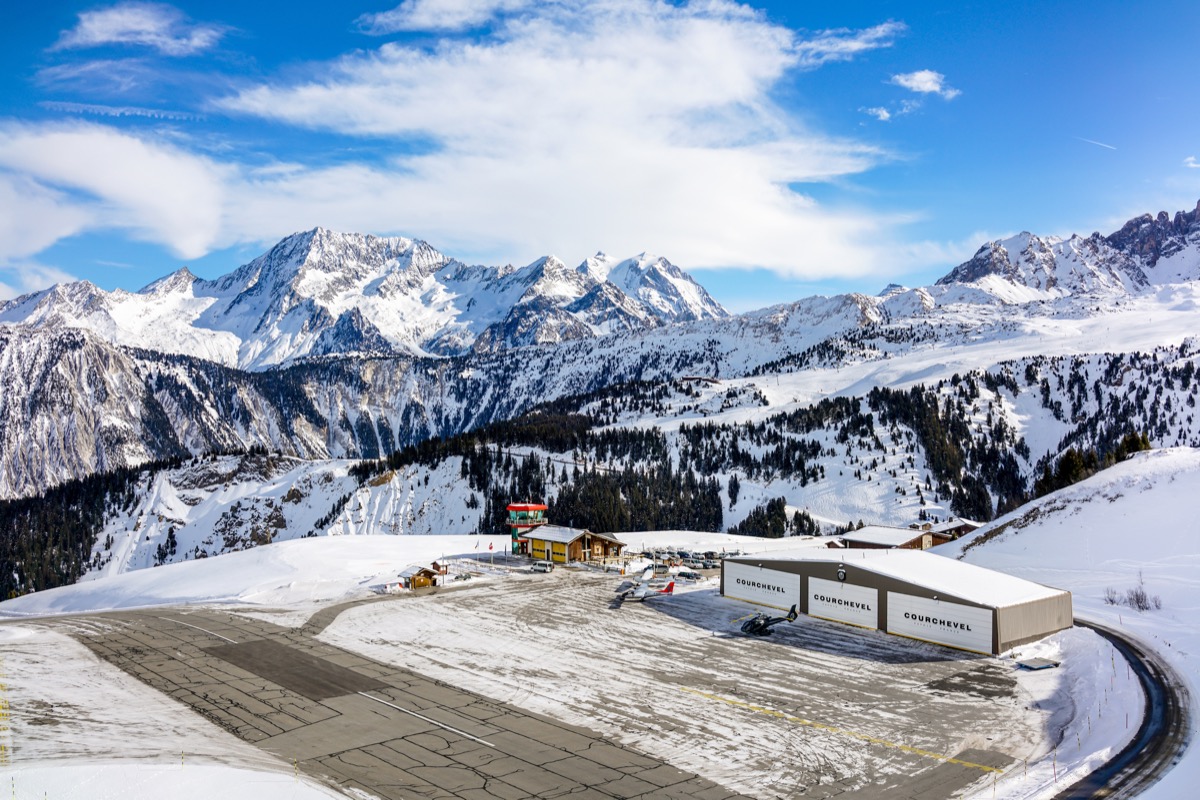
If this airport’s icy alpine location wasn’t scary enough, the short runway on a large incline will seal the deal. Landing at Courchevel Altiport is considered extra dangerous, because with so many surrounding mountains, there is no room for a go-around approach. That means that if the pilot is going to land, they have to be ready to do so on the first try. That also means if there is low visibility, because of clouds or fog, landings become nearly impossible. Even in good visibility, things can go wrong. In 2019, a plane missed the touch-down zone and crashed into a snowbank, injuring three passengers.
5
Congonhas Airport, Brazil
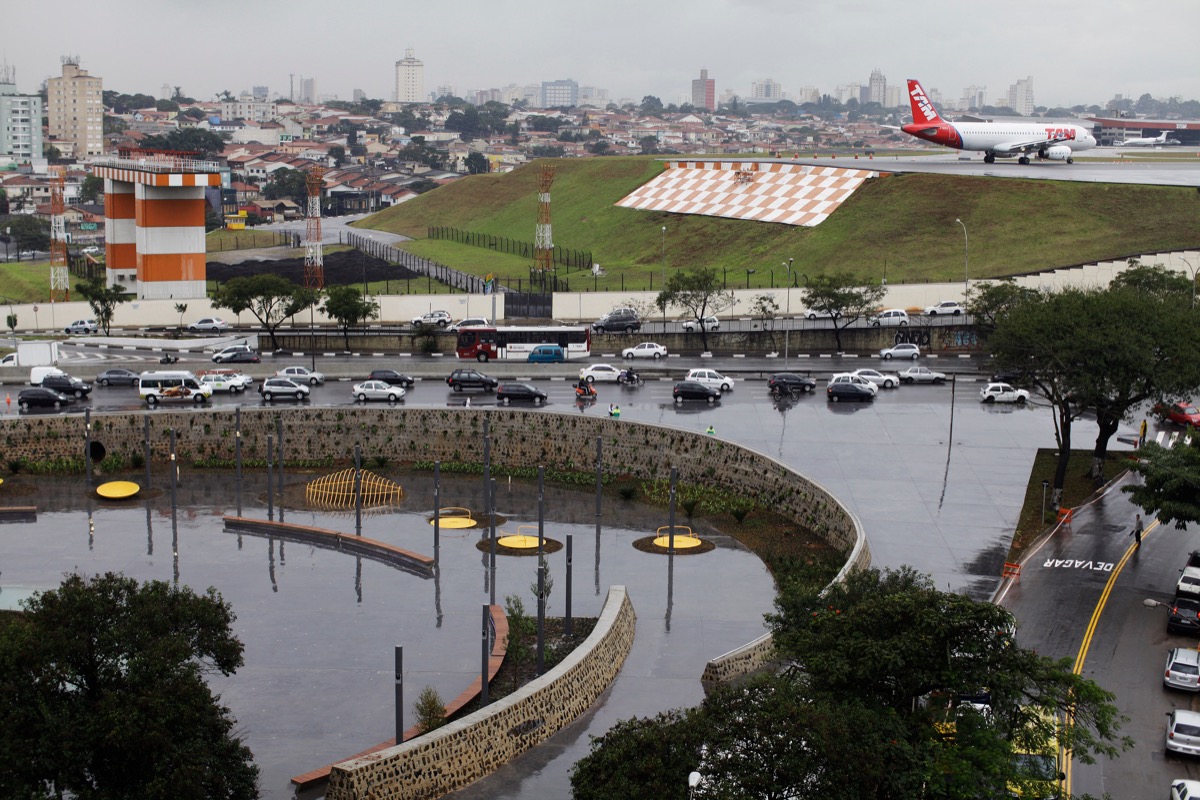
Unlike other airports that have mountains and sea cliffs to steer around, planes landing at Congonhas Airport must descend carefully over the tall buildings that make up Sao Paulo’s urban sprawl. In addition to having a short runway, the airport consistently struggles with slippery conditions and has seen many deadly accidents since it opened in 1936. After the deadliest crash in 2007, which resulted in the death of all passengers and crew on board as well as 12 people on the ground, the airport reduced its number of flights and enforced size and weight restrictions for incoming aircrafts.
6
Juancho E. Yrausquin Airport, Saba
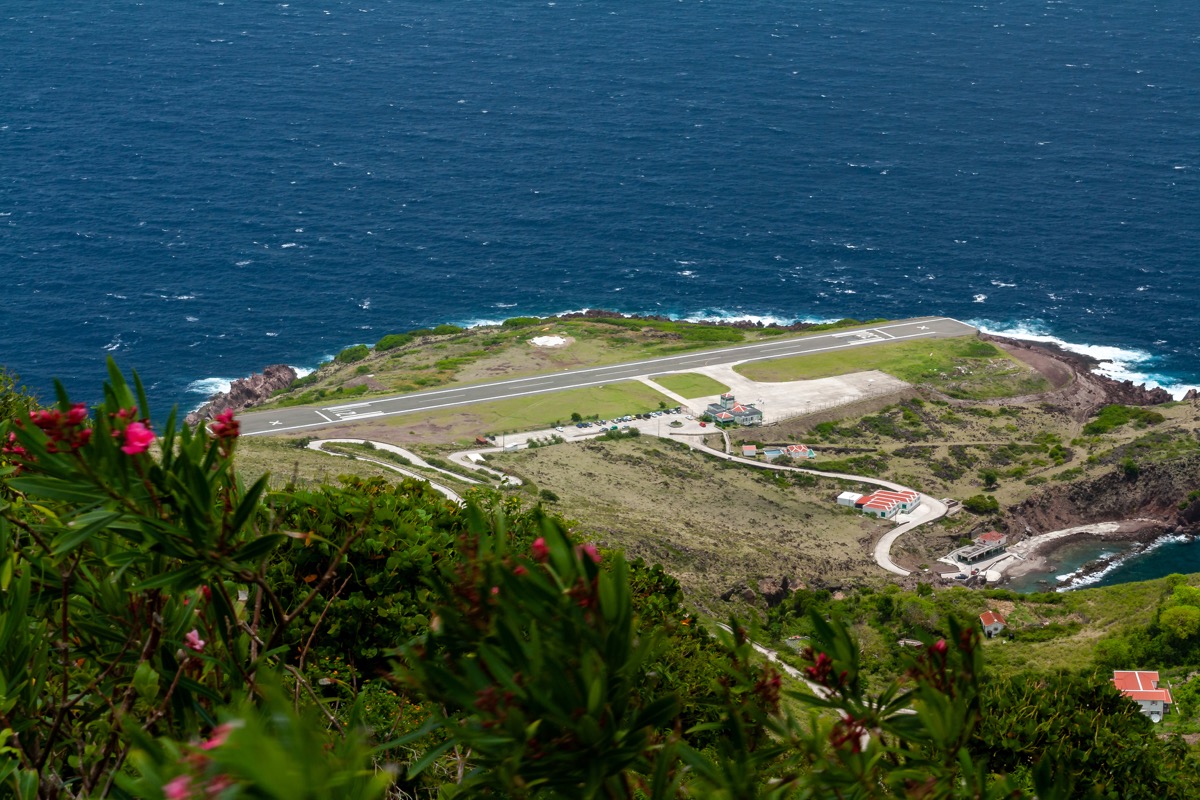
Only 1,300 feet long, the runway at the Saba Airport is the shortest commercial runway in the world. On a flat piece of coastline that juts out into the Caribbean Sea, the runway is surrounded by rocky cliffs on all sides, requiring pilots to come to a full stop shortly after landing. Only trained pilots and regional airplanes are allowed to land here.
7
Tioman Airport, Malaysia

Although Malaysia’s Tioman Airport is only open to charter flights, the approach to the short runway is quite harrowing. Pilots must clear multiple mountain ridges and then make a sharp turn to land on the runway parallel to the beach. To make things more difficult, the runway is one-way, which means that arriving and departing planes only have one direction and route to take.
8
Toncontin Airport, Honduras
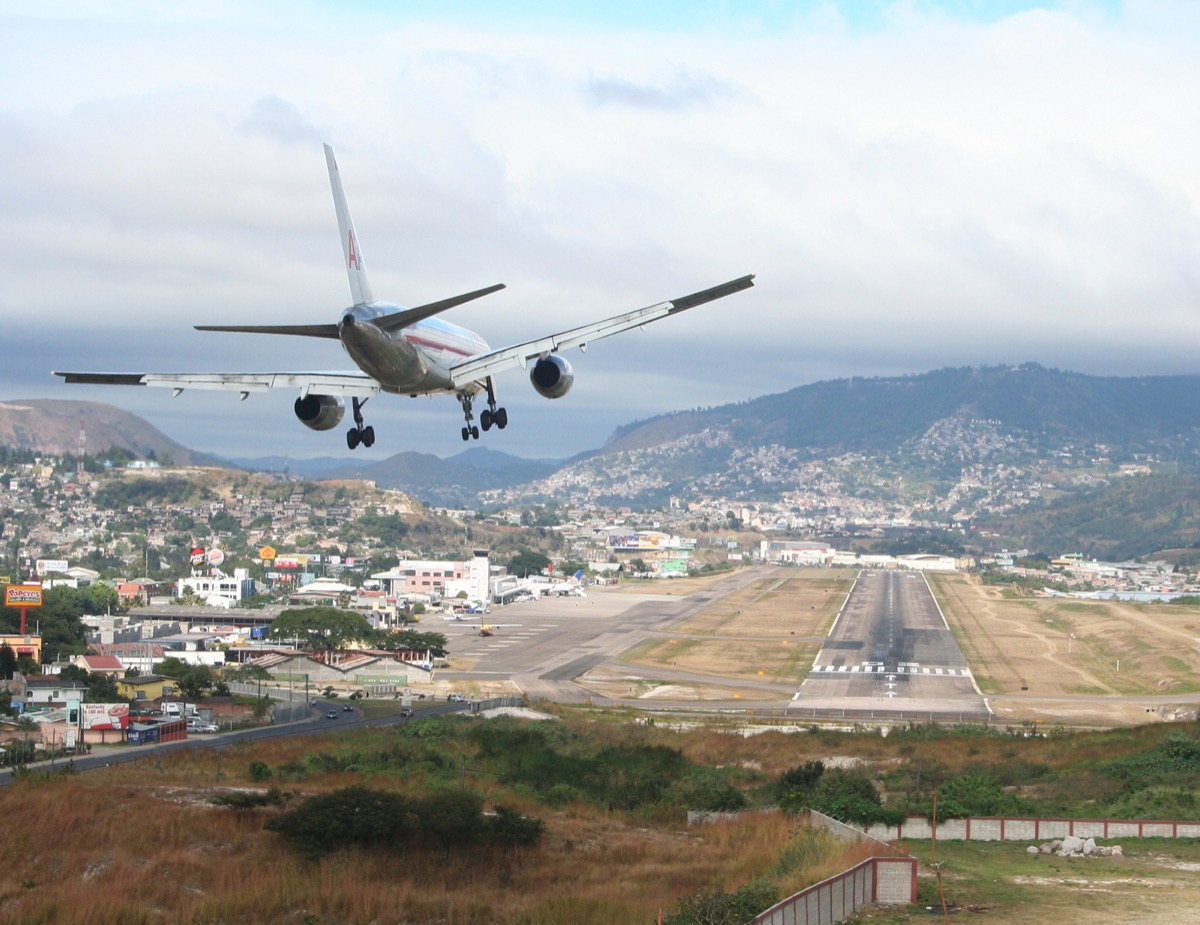
The mountainous terrain surrounding the Toncontin Airport is extremely hazardous for airplanes, particularly on the approach to Runway 02, which requires a hairpin turn and a steep landing. The airport used to be even more dangerous up until 2007, when a large portion of the nearby hillside was flattened and the runway was extended. Still, the runway is considered extremely short compared to other international airports. Because of its high altitude, take offs are also very difficult to pull off since it requires the plane to use a lot of power and quickly climb to 9,000 feet in order to clear the nearby mountains.
9
Paro Airport, Bhutan
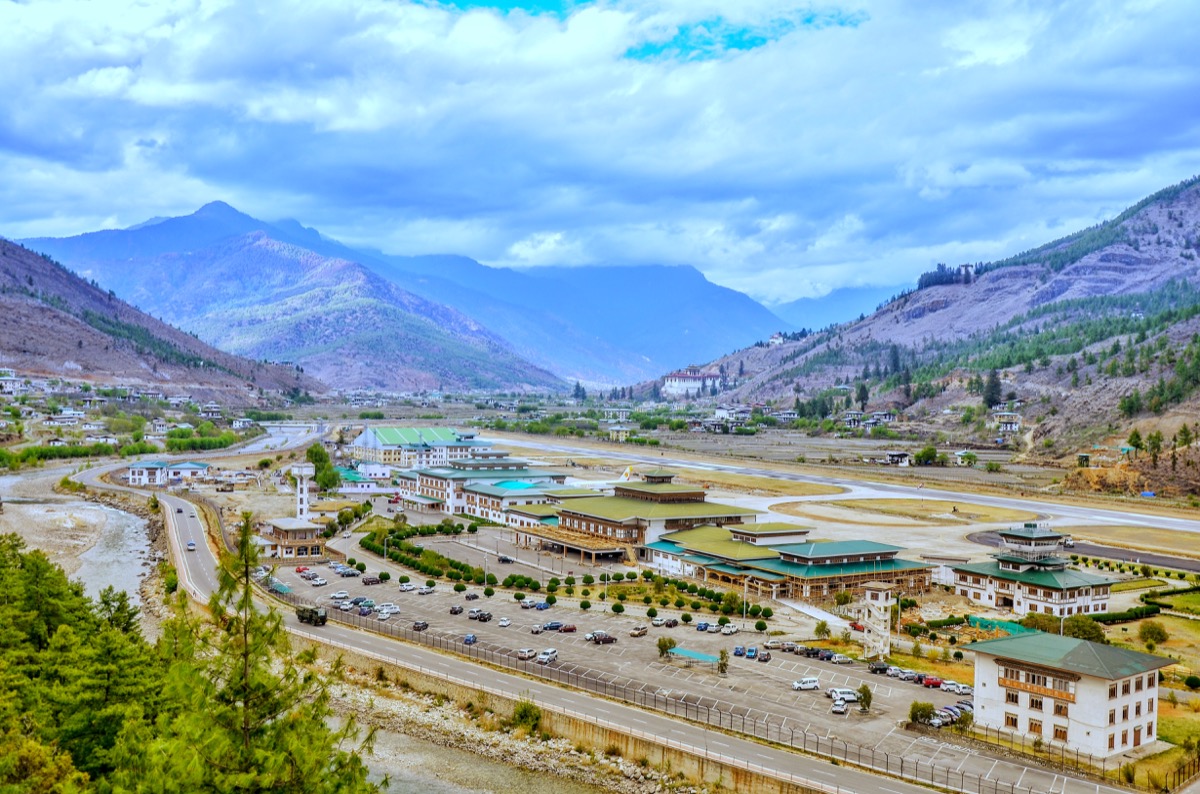
As Bhutan’s only international airport, visitors have no choice but to land at Paro Airport. Surrounded by the towering Himalayas, the approach to the airport is considered so challenging that there are only eight pilots in the world who are qualified to make it. It’s not just the high peaks that make this landing so tricky. The valley’s high winds also pose a challenge to the pilots, who have to carefully guide the plane through the mountain pass and over the tops of the houses that sit near the runway.
10
Madeira Airport, Portugal
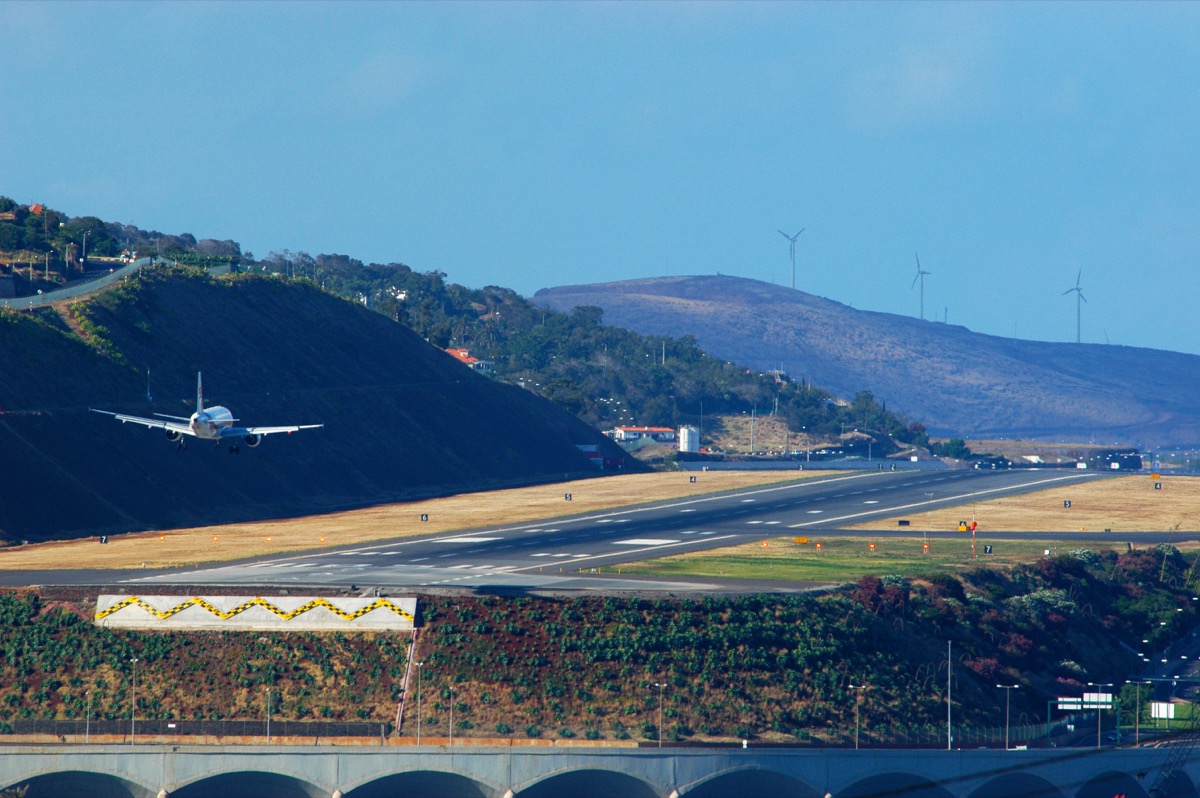
Although the short runway at Madeira Airport has since been extended, the new addition sits on a platform constructed over the ocean and held up by 180 columns. The waterside location also means high winds and bumpy landings. In order to be authorized to land at this airport, pilots must first pass advanced training on a flight simulator.
11
Telluride Regional Airport, Colorado
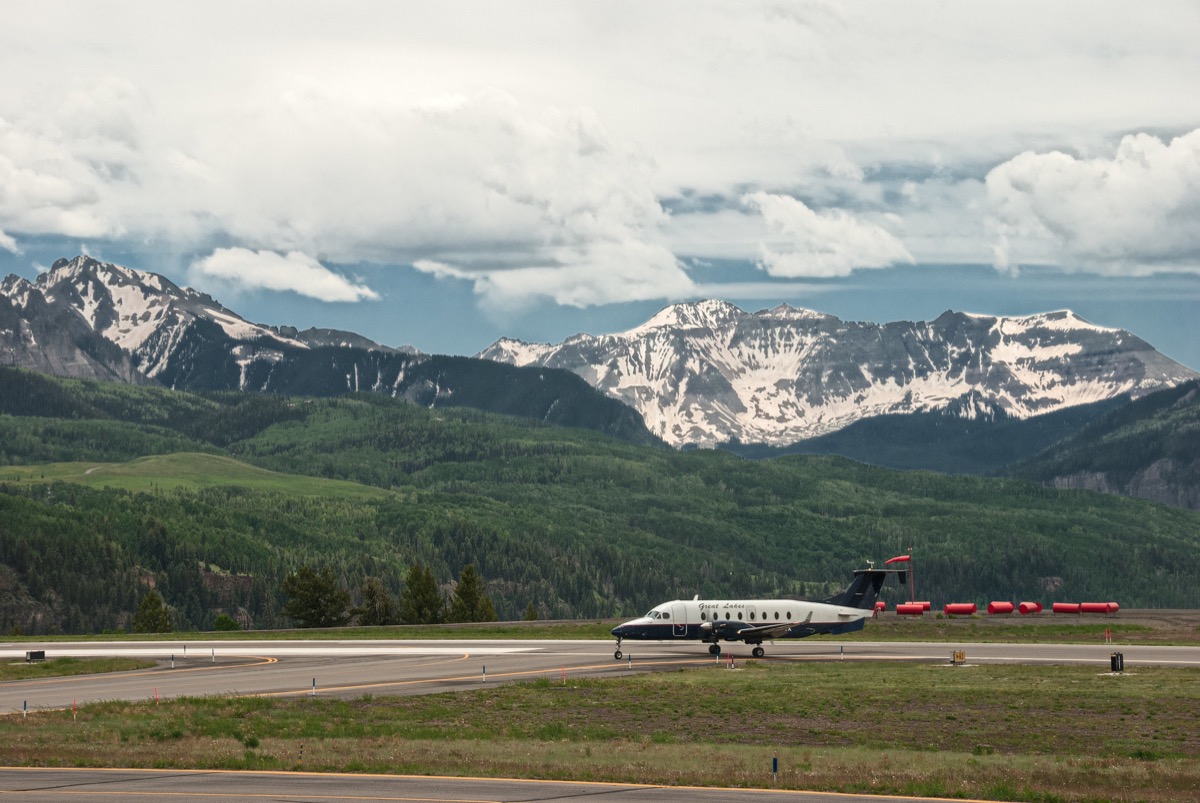
With the highest elevation for a commercial airport in the United States, Telluride Regional Airport is the most dangerous airport in the country. With only 1,000 feet of runway and steep cliffs on each end, it’s a beautiful approach to the plateau, but pilots need to have some serious skill to stop the plane before it reaches the end of the runway, where cliff awaits. Note: Although Telluride is a popular ski destination, the airport is only serviced by commuter airlines from Denver.
12
Gibraltar International Airport, British Territory
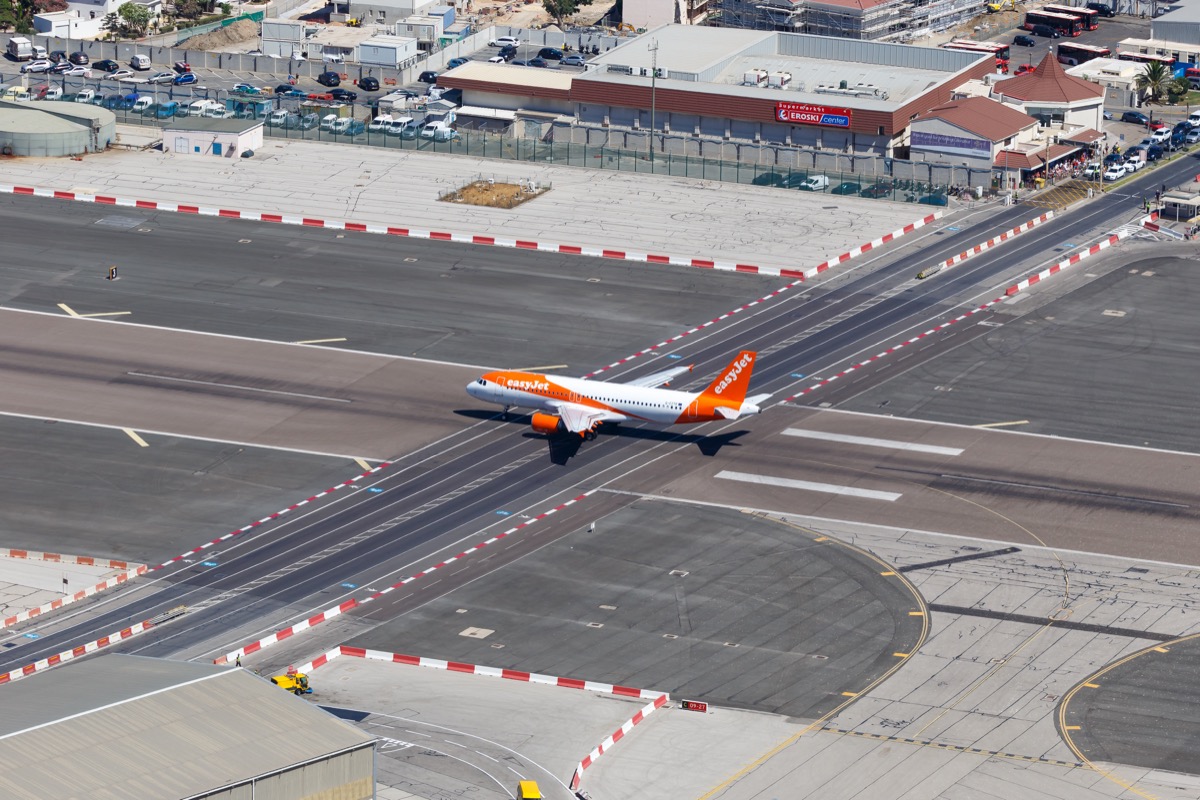
In what seems like a poor choice of urban planning, the runway at the Gibraltar Airport intersects with Winston Churchill Avenue, the area’s main highway, To its advantage, the runway is quite long but traffic does need to be stopped every time a plane must land or take off. In winter, high winds coming off the mountains also add to the difficulty. The airport has seen a small number of accidents since it opened in 1939, but thankfully, no car has ever been hit by an oncoming plane.
13
Gisborne Airport, New Zealand
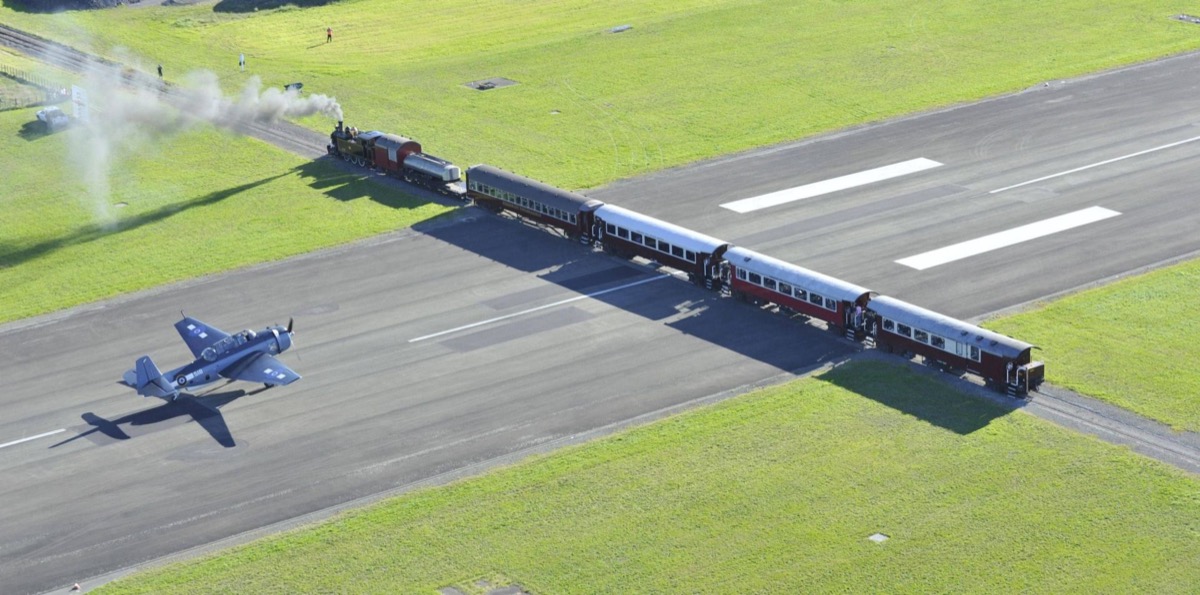
On New Zealand’s North Island, the Gisborne Airport is the only one in the world that has a working railway line crossing its main runway. Trains and planes intersect throughout the day and are carefully managed by the air traffic controller who signals for the train to go after the plane has landed. As you might expect, the tracks were already laid down when the runway was built all the way back in 1966, and the two modes of transportation have been in peaceful accident-free coexistence ever since.
And if you have a fear of flying, you may want to be cautious at these 13 Worst Airports to Fly Into, According to Pilots.
